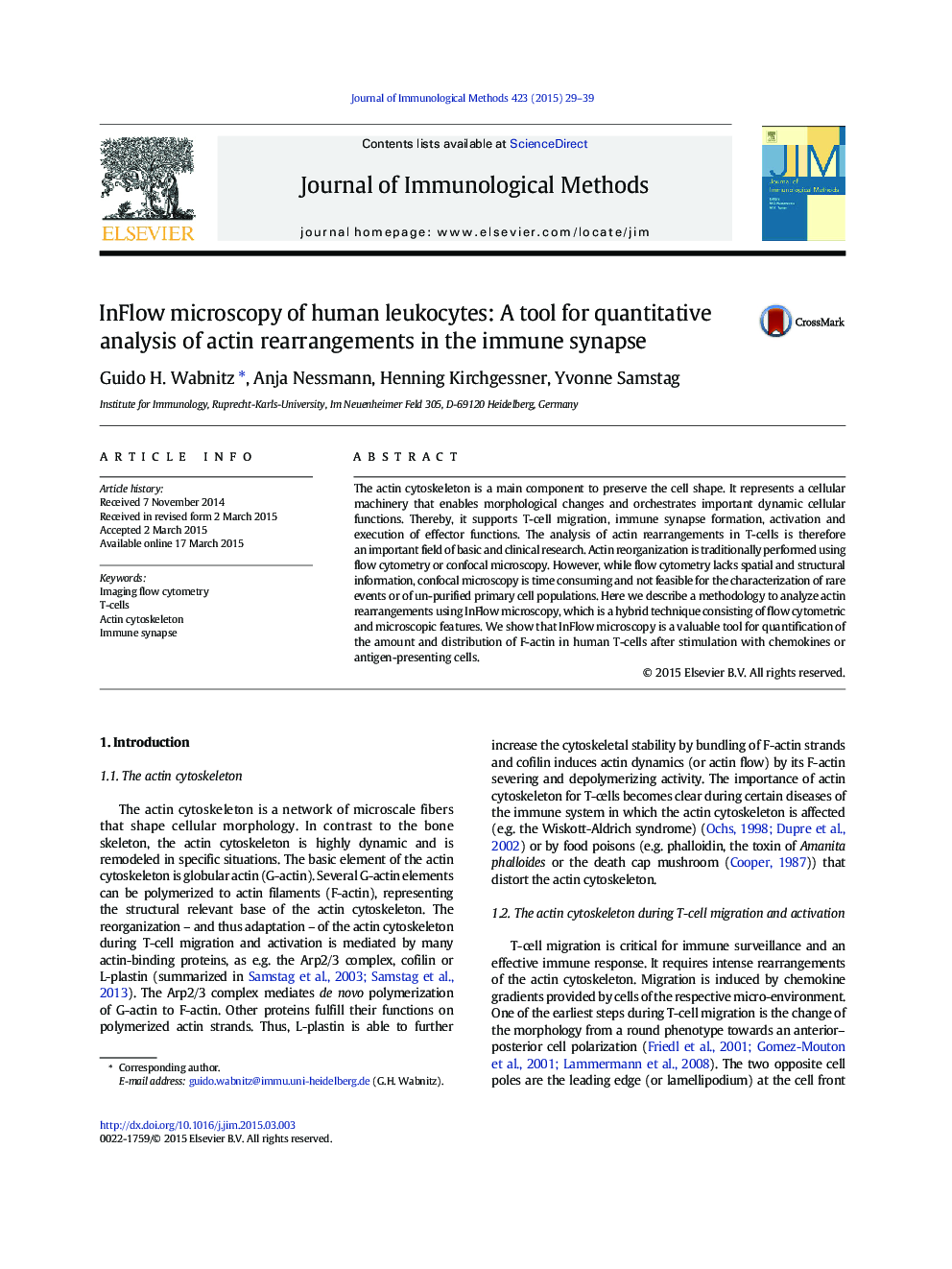| Article ID | Journal | Published Year | Pages | File Type |
|---|---|---|---|---|
| 2088069 | Journal of Immunological Methods | 2015 | 11 Pages |
•We provide an InFlow microscopy methodology to quantify F-actin in primary T-cells.•Purification of primary human T-cells is not needed for F-actin quantification.•F-actin is analyzed in T-cells that form a conjugate with APCs.•A gating strategy to study immune synapses of T-cells from human leukocyte samples.
The actin cytoskeleton is a main component to preserve the cell shape. It represents a cellular machinery that enables morphological changes and orchestrates important dynamic cellular functions. Thereby, it supports T-cell migration, immune synapse formation, activation and execution of effector functions. The analysis of actin rearrangements in T-cells is therefore an important field of basic and clinical research. Actin reorganization is traditionally performed using flow cytometry or confocal microscopy. However, while flow cytometry lacks spatial and structural information, confocal microscopy is time consuming and not feasible for the characterization of rare events or of un-purified primary cell populations. Here we describe a methodology to analyze actin rearrangements using InFlow microscopy, which is a hybrid technique consisting of flow cytometric and microscopic features. We show that InFlow microscopy is a valuable tool for quantification of the amount and distribution of F-actin in human T-cells after stimulation with chemokines or antigen-presenting cells.
